President of the Continental Congress
| This article is part of a series on the |
| United States Continental Congress |
|---|
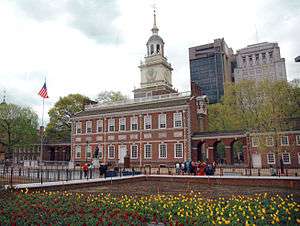 |
| Predecessors |
|
| 1st Continental Congress |
| 2nd Continental Congress |
| Congress of the Confederation |
| Members |
|
|
The President of the Continental Congress was the presiding officer of the Continental Congress, the convention of delegates that emerged as the first (transitional) national government of the United States during the American Revolution. The president was a member of Congress elected by the other delegates to serve as a neutral discussion moderator during meetings of Congress. Designed to be a largely ceremonial position without much influence, the office was unrelated to the later office of President of the United States.[1] Upon the ratification of the Articles of Confederation (the new nation's first constitution) in March 1781, the Continental Congress became the Congress of the Confederation. The membership of the Second Continental Congress carried over without interruption to the First Congress of the Confederation, as did the office of president.
Fourteen men served as president of Congress between September 1774 and November 1788. They came from 9 of the original 13 states: Virginia (3), Massachusetts (2), Pennsylvania (2), South Carolina (2), Connecticut (1), Delaware (1), Maryland (1), New Jersey (1), and New York (1). The median age at the time of election was 47.[2]
Role
The president of Congress was, by design, a position with little authority.[3] The Continental Congress, fearful of concentrating political power in an individual, gave their presiding officer even less responsibility than the speakers in the lower houses of the colonial assemblies.[4] Unlike some colonial speakers, the president of Congress could not, for example, set the legislative agenda or make committee appointments.[5] The president could not meet privately with foreign leaders; such meetings were held with committees or the entire Congress.[6]
The presidency was a largely ceremonial position.[7][8] There was no salary.[9] The primary role of the office was to preside over meetings of Congress, which entailed serving as an impartial moderator during debates.[10] When Congress would resolve itself into a Committee of the Whole to discuss important matters, the president would relinquish his chair to the chairman of the Committee of the Whole.[11] Even so, the fact that President Thomas McKean was at the same time serving as Chief Justice of Pennsylvania, provoked some criticism that he had become too powerful. According to historian Jennings Sanders, McKean's critics were ignorant of the powerlessness of the office of president of Congress.[12]
The president was also responsible for dealing with a large amount of official correspondence,[13] but he could not answer any letter without being instructed to do so by Congress.[14] Presidents also signed, but did not write, Congress's official documents.[15] These limitations could be frustrating, because a delegate essentially declined in influence when he was elected president.[16]
Historian Richard B. Morris argued that, despite the ceremonial role, some presidents were able to wield some influence:
Lacking specific authorization or clear guidelines, the presidents of Congress could with some discretion influence events, formulate the agenda of Congress, and proded Congress to move in directions they considered proper. Much depended on the incumbents themselves and their readiness to exploit the peculiar opportunities their office provided.[17]
Congress, and its presidency, declined in importance after the ratification of the Articles of Confederation and the ending of the Revolutionary War. Increasingly, delegates elected to the Congress declined to serve, the leading men in each state preferred to serve in state government, and the Congress had difficulty establishing a quorum.[18] President Hanson wanted to resign after only a week in office, but Congress lacked a quorum to select a successor, and so he stayed on.[7] President Mifflin found it difficult to convince the states to send enough delegates to Congress to ratify the 1783 Treaty of Paris.[19] For six weeks in 1784, President Lee did not come to Congress, but instead instructed secretary Charles Thomson to forward any papers that needed his signature.[20]
John Hancock was elected to a second term in November 1785, even though he was not then in Congress, and Congress was aware that he was unlikely to attend.[21] He never took his seat, citing poor health, though he may have been uninterested in the position.[21] Two delegates, David Ramsay and Nathaniel Gorham, performed his duties with the title of "chairman".[21][22] When Hancock finally resigned the office in June 1786, Gorham was elected. After he resigned in November 1786, it was months before enough members were present in Congress to elect a new president.[21] In February 1787, General Arthur St. Clair was elected. Congress passed the Northwest Ordinance during St. Clair's presidency and elected him as the governor of the Northwest Territory.[23]
As the people of the various states began debating the proposed United States Constitution in later months of 1787, the Confederation Congress found itself reduced to the status of a caretaker government.[21] There were not enough delegates present to choose St. Clair's successor until January 22, 1788, when the final president of Congress, Cyrus Griffin, was elected.[21] Griffin resigned his office on November 15, 1788, after only two delegates showed up for the new session of Congress.[21]
Term of office
Prior to ratification of the Articles, presidents of Congress served terms of no specific duration; their tenure ended when they resigned, or, lacking an official resignation, when Congress selected a successor. When Peyton Randolph, who was elected in September 1774 to preside over the First Continental Congress, was unable to attend the last few days of the session due to poor health, Henry Middleton was elected to replace him.[24] When the Second Continental Congress convened the following May, Randolph was again chosen as president, but he returned to Virginia two weeks later to preside over the House of Burgesses.[25] John Hancock was elected to fill the vacancy, but his position was somewhat ambiguous, because it was not clear if Randolph had resigned or was on a leave of absence.[26] The situation became uncomfortable when Randolph returned to Congress in September 1775. Some delegates thought Hancock should have stepped down, but he did not; the matter was resolved only by Randolph's sudden death that October.[27]
Ambiguity also clouded the end of Hancock's term. He left in October 1777 for what he believed was an extended leave of absence, only to find upon his return that Congress had elected Henry Laurens to replace him.[28] Hancock, whose term ran from May 24, 1775 to October 29, 1777 (a period of 2 years, 5 months), was the longest serving president of Congress.
The length of a presidential term was ultimately codified by Article Nine of the Articles of Confederation, which authorized Congress "to appoint one of their number to preside; provided that no person be allowed to serve in the office of president more than one year in any term of three years".[29] When the Articles went into effect in March 1781, however, the Continental Congress did not hold an election for a new president under the new constitution.[30] Instead, Samuel Huntington continued serving a term that had already exceeded the new Term limit.[30] The first president to serve the specified one-year term was John Hanson (November 5, 1781 to November 4, 1782).[7][31]
List of presidents
Terms and backgrounds of the 14 persons who served as president of the Continental Congress:[32]
| President | State/colony | Term | Length | Previous position | |
|---|---|---|---|---|---|
 | Peyton Randolph | Virginia | – October 22, 1774 | 48 days | Speaker of the Virginia House of Burgesses |
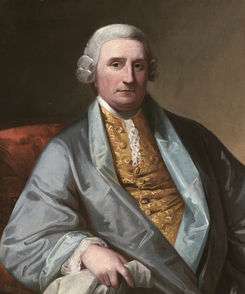 | Henry Middleton | South Carolina | – October 26, 1774 | 5 days | Speaker, S.C. Commons House of Assembly |
 | Peyton Randolph | Virginia | – May 24, 1775 | 15 days | Speaker of the Virginia House of Burgesses |
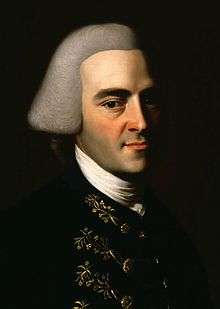 | John Hancock | Massachusetts | – October 29, 1777 | 890 days | President, Massachusetts Provincial Congress |
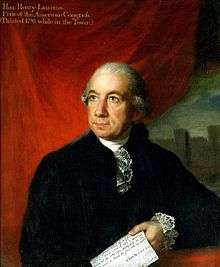 | Henry Laurens | South Carolina | – December 9, 1778 | 404 days | President, S.C. Provincial Congress, Vice President, S.C. |
 | John Jay | New York | – September 28, 1779 | 293 days | Chief Justice New York Supreme Court |
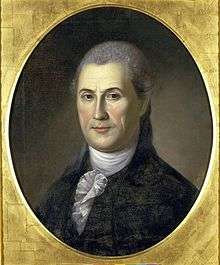 | Samuel Huntington | Connecticut | – July 10, 1781 | 652 days | Associate Judge, Connecticut Superior Court |
 | Thomas McKean | Delaware | – November 5, 1781 | 119 days | Chief Justice of the Pennsylvania Supreme Court |
 | John Hanson | Maryland | – November 4, 1782 | 365 days | Maryland House of Delegates |
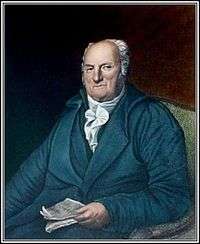 | Elias Boudinot | New Jersey | – November 3, 1783 | 365 days | Commissary of Prisoners for the Continental Army |
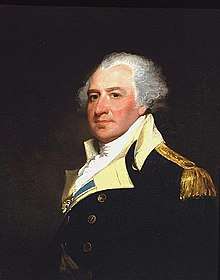 | Thomas Mifflin | Pennsylvania | – June 3, 1784 | 214 days | Quartermaster General of Continental Army, Board of War |
| Richard Henry Lee | Virginia | – November 4, 1785 | 340 days | Virginia House of Burgesses | |
 | John Hancock | Massachusetts | – June 5, 1786 | 195 days | Governor of Massachusetts |
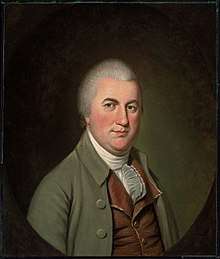 | Nathaniel Gorham | Massachusetts | – February 2, 1787[33] | 242 days | Board of War |
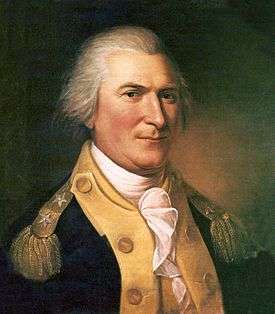 | Arthur St. Clair | Pennsylvania | – November 4, 1787 | 276 days | Major General, Continental Army |
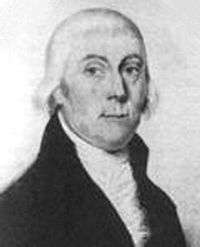 | Cyrus Griffin | Virginia | – November 2, 1788 | 299 days | Judge, Virginia Court of Appeals |
Relationship to the President of the United States
Because Hanson was the first president to serve under the Articles of Confederation, his grandson later promoted him as the "first President of the United States" and waged a successful campaign to have Hanson's statue placed in Statuary Hall in the US Capitol, even though, according to historian Gregory Stiverson, Hanson was not one of Maryland's foremost leaders of the Revolutionary era.[7] In reality, beyond a similarity of title, the office of president of Congress "bore no relationship"[1] to the later office of President of the United States. As historian Edmund Burnett wrote:
[T]he President of the United States is scarcely in any sense the successor of the presidents of the old Congress. The presidents of Congress were almost solely presiding officers, possessing scarcely a shred of executive or administrative functions; whereas the President of the United States is almost solely an executive officer, with no presiding duties at all. Barring a likeness in social and diplomatic precedence, the two offices are identical only in the possession of the same title.[34]
See also
References
- 1 2 Ellis 1999, p. 1.
- ↑ Morris 1987, p. 101.
- ↑ Jillson & Wilson 1994, p. 71.
- ↑ Jillson & Wilson 1994, pp. 71–73.
- ↑ Jillson & Wilson 1994, pp. 75, 89.
- ↑ Jillson & Wilson 1994, pp. 77–78.
- 1 2 3 4 Gregory A. Stiverson, "Hanson, John, Jr.", American National Biography Online, February 2000.
- ↑ H. James Henderson. "Boudinot, Elias", American National Biography Online, February 2000.
- ↑ Sanders 1930, 13.
- ↑ Jillson & Wilson 1994, pp. 76, 82.
- ↑ Jillson & Wilson 1994, p. 81.
- ↑ Sanders 1930, pp. 21–22.
- ↑ Jillson & Wilson 1994, p. 76.
- ↑ Jillson & Wilson 1994, p. 80.
- ↑ Jillson & Wilson 1994, p. 78.
- ↑ Jillson & Wilson 1994, p. 89.
- ↑ Morris 1987, p. 100
- ↑ Jillson & Wilson 1994, pp. 85–88.
- ↑ John K. Alexander, "Mifflin, Thomas", American National Biography Online, February 2000.
- ↑ Jillson & Wilson 1994, p. 87.
- 1 2 3 4 5 6 7 Jillson & Wilson 1994, p. 88.
- ↑ Sanders 1930, p. 29.
- ↑ Sanders 1930, pp. 30–31.
- ↑ Sanders 1930, p. 11.
- ↑ Sanders 1930, pp. 11–12.
- ↑ Fowler 1980, p. 191.
- ↑ Fowler 1980, p. 199.
- ↑ Fowler 1980, p. 230–31.
- ↑ Ford, Worthington C.; et al., eds. (1904–37). "Journals of the Continental Congress, 1774-1789". Washington, D.C. Retrieved December 31, 2017.
- 1 2 Burnett 1941, 503.
- ↑ Burnett 1941, p. 524.
- ↑ Jillson & Wilson 1994, p. 77.
- ↑ Editors. "GORHAM, Nathaniel, (1738 - 1796)". Biographical Dictionary of the United States Congress: 1774–Present. United States Congress. Retrieved 2018-04-18.
Member of the Continental Congress in 1782, 1783, 1786, 1787, and 1789, and was its president from June 6, 1786, to February 2, 1787
- ↑ Burnett 1941, p. 34.
Works cited
- Burnett, Edward Cody (1941). The Continental Congress. New York City, New York: Norton.
- Ellis, Richard J. (1999). Founding the American Presidency. Lanham, Maryland: Rowman & Littlefield. ISBN 0-8476-9499-2.
- Fowler, William M., Jr. (1980). The Baron of Beacon Hill: A Biography of John Hancock. Boston: Houghton Mifflin. ISBN 0-395-27619-5. .
- Jillson, Calvin C.; Wilson, Rick K. (1994). Congressional Dynamics: Structure, Coordination, and Choice in the First American Congress, 1774–1789. Palo Alto, California: Stanford University Press. ISBN 0-8047-2293-5. .
- Morris, Richard B. (1987). The Forging of the Union, 1781–1789. New York City, New York: Harper & Row. ISBN 978-0060157333.
- Sanders, Jennings Bryans (1930). The Presidency of the Continental Congress, 1774-89: A Study in American Institutional History. Chicago.
External links
- Presidentsusa.net articles – "Other" Presidents
- United States House of Representatives article – The Articles of Confederation